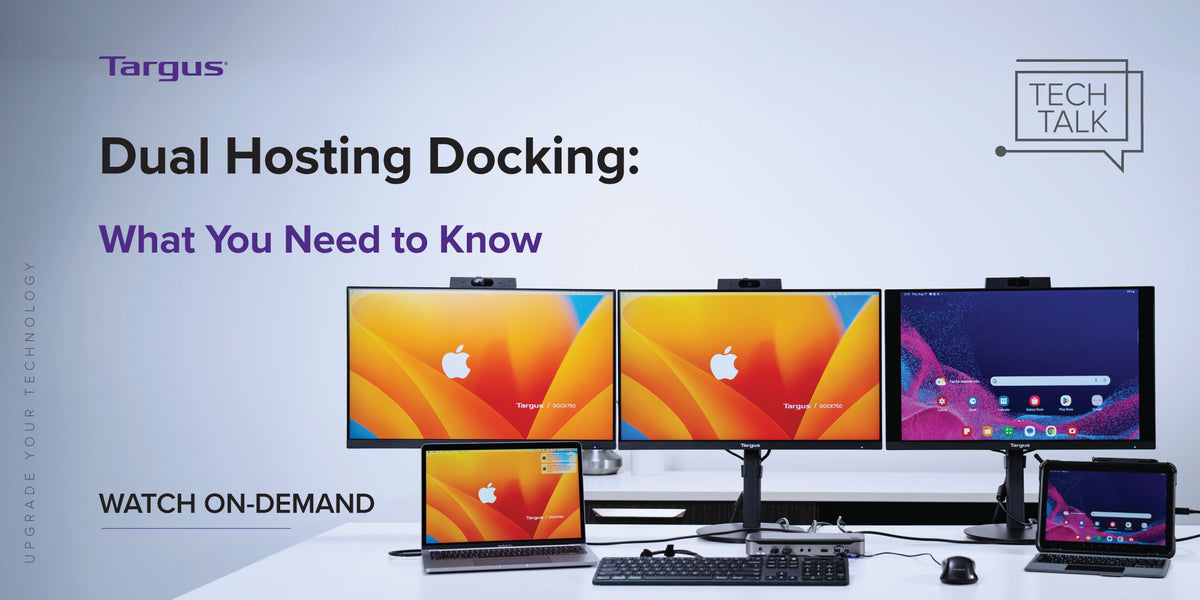Key Applications and Benefits of Dual Host Docks

How dual host docking stations with Keyboard/Video/Mouse (KVM) sharing increase productivity, collaboration, and connectivity
A dual host docking station is equipped to connect and simultaneously power and control two different host devices, connecting them up to three monitors and multiple downstream peripherals via a single desktop dock.
Dual host docking solutions with integrated Keyboard/Video/Mouse (KVM) sharing are a powerful way to enhance the capabilities of a single docking station – resulting in greater productivity, increased collaboration, and more connectivity.
During our recent Tech Talk webinar, Targus Docktor Senior Director of Engineering Kevin Quinn, and Andrew Corkill, Vice President, Global Marketing & eCommerce, offered an overview of dual host docking technology, its key benefits and use cases.
In case you missed it, now you can watch the 30-minute session on demand.
What is Dual Host Docking and What Does it Do?
Dual host docking lets users easily connect and switch between two different host devices.
Advantages of Dual Host Docking Technology with KVM
Dual Host docking stations with KVM sharing allow users to get more out of a single docking station. Key advantages include being able to operate disparate host platforms, enable Dual DisplayPort and single HDMI display monitors, share a keyboard and mouse, and deliver Dual PD3.0 100W charging to both host devices.
Common Use Cases
There are various ways to leverage dual host docking stations, such as:
- Operating two host machines
- Standardizing desks for mobile and desktop user sharing
- Simplifying the workspace setup for two different work shifts
- Working from home between a work and personal computer
- Enabling fast on-desk collaboration
Want more insight into Dual Host docking and how it can benefit your organization? Schedule your complimentary consultation.


